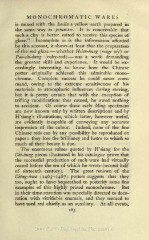Page 349 - Oriental Series Japan and China, Brinkly
P. 349
MONOCHROMATIC WARES
is mixed with the kaolin a yellow earth prepared in
the same way as petun-tse. It is conceivable that
such a clay is better suited to receive this species of
glaze." Incomplete as is the information afforded
by this account, it shows at least that the preparation
of the red glaze whether Hsien-hung (rouge vtf) or
Pao-shi-hung (ruby-red) was a work demanding
the greatest skill and experience. It would be ex-
ceedingly interesting to know how the Chinese
potter originally achieved this admirable mono-
chrome. Complete success he could never com-
mand, owing to the extreme sensitiveness of his
materials to atmospheric influences during stoving,
but it is pretty certain that with the exception of
trifling modifications thus caused, he owed nothing
to accident. Of course these early Ming specimens
are now known only by written descriptions and by
H'siang's illustrations, which latter, however useful,
are evidently incapable of conveying any accurate
impression of the colour. Indeed, none of the fine
Chinese reds can by any possibility be reproduced on
paper : they lose the brilliancy and lustre to which so
much of their beauty is due.
The enormous values quoted by H'siang for the
Chi-hung pieces illustrated in his catalogue prove that
the successful production of such ware had virtually
ceased before the era of which he wrote (second half
of sixteenth century). The great renown of the
Cheng-hwa (14651487) potters suggests that they
too, ought to have bequeathed to posterity some fine
examples of this highly prized monochrome. But
in their time attention was especially directed to deco-
ration with verifiable enamels, and they seemed to
have used red chiefly as an auxiliary. At all events,
283

